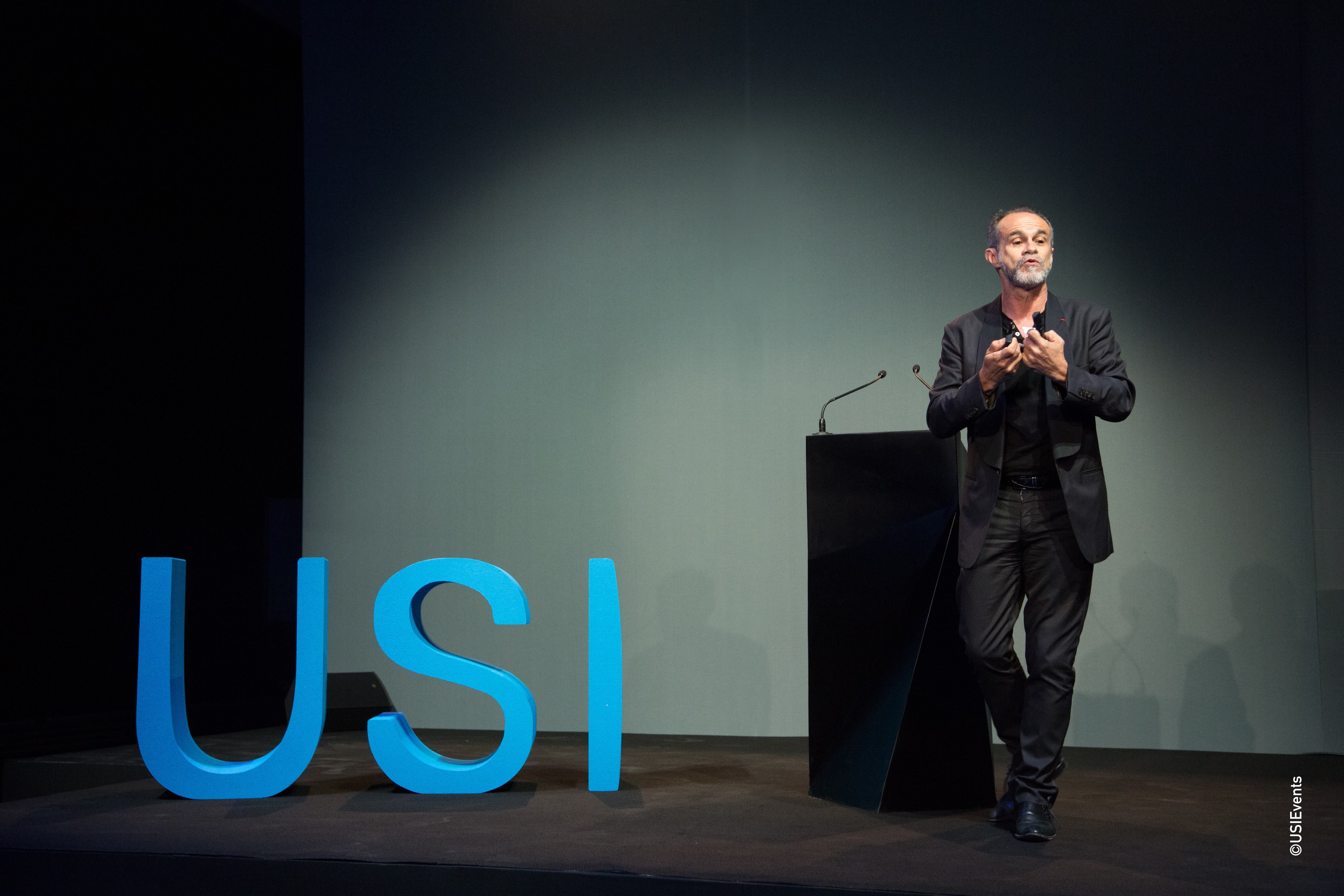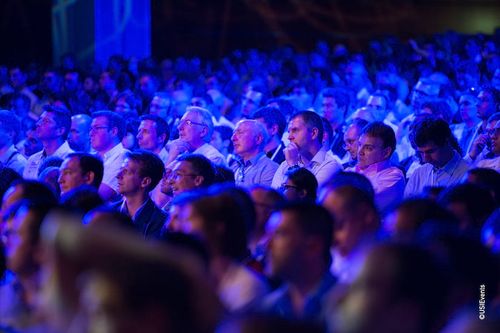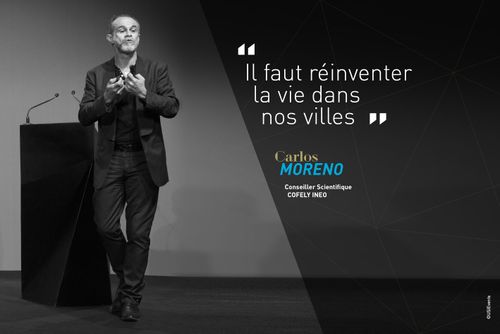Smart city : from "digital cities" to "living cities"
Our report on Carlos Moreno's talk "From digital cities to living cities"
In our highly urbanized world, cities have become very important. To talk about cities, a entry point can be breakthroughs in digital technologies, hyper-connectivity, geolocalization, miniaturization and interconnected objects.
"Technology is a means, service is the goal"
However, when talking about individuals and their relations to their territories, the central question is: what type of hyper-connectivity and what for? Because it is possible to be both hyper-connected and asocial. Carlos Moreno calls such people "geek zombies". In a hyper-connected, highly urbanized, globalized world, hyper-connectivity pervades space, all continents, all territories. But what really matters is to understand what it is good for. Which brings us to the most fundamental element: service.
Cities can be seen as shared living spaces
Cities are like complex life forms. Like all living systems, they must meet their needs in order to grow, and can be fragilized by any setback. Today this is what we call vulnerability (due to fires, storms, epidemics, power-outs, etc.). People come to cities in search of a better quality of life. But quality of life is also very fragile. Cities can be seen as shared living spaces.
Today however there is growing distance between humans and their territory. The challenge for Humankind in the 21st century is to recreate the link with the territory. The link is unique, not dual, one cannot separate humans from their territory. The heart of the matter is interdependency.

Density, a threat to our civilization?
How do relations between humans and their territory change within a given social, economic, cultural and technological context? Currently, demographic growth is stronger in Asia and Africa then anywhere else, and continues to rise. This leads to levels of human density in cities which pose a threat to our civilization. Because of human activity, CO2 levels have risen above 400ppm, an alarmingly high concentration. This type of phenomena can have drastic consequences if we do nothing to prevent systemic changes.
The 21st century, the century of cities
The majority of humans live in cities. 10% of all people live in just 35 cities. In 2030, the 750 largest cities will represent 60% of worldwide GDP. We are seeing the emergence of global cities, world cities. Very often there are tighter relations between world cities than with other cities in the same country. For example, exchanges between San Fransisco and Tel Aviv are much more intense than between San Fransisco and Boston.
There is both growing urbanization and high competitive aggregation in terms of economic attractiveness. These are trends which will pick up speed in the coming years. Cities will be in a position of economic, demographic and urban power stronger than what we're now seeing in emerging continents such as Africa, with everything that entails for quality of life. Because what people seek in cities above all, and by any means, is quality of life.
The fragility of cities
Growing urbanization has given rise to emergent and shifting cultures. The middle classes, in Asia for example, have unprecedented buying power. They want to adopt the Western lifestyle, but it does not correspond to their values. They are seeking to reflect the ways of a different society. This is a phenomenon which Carlos Moreno has theorized under the term "blurry mirror".
Today, the relations between Humankind and our habitat are systemic and the challenges are huge. For example, in India last year, the new habits of city dwellers led to a one week power outage, affecting 600 million people, the equivalent of the population of a European country, because the power grid was not designed for such intense use. There are countless such examples and new risks are constantly emerging, including new urban diseases which the populations have yet to develop a defense mechanism for.
The systemic effect we are faced with the world over is crucial, especially as it must be taken into account within the entire chain (water, pollution, etc.).
A light at the end of the tunnel?
In Carlos Moreno's view the answer is yes, on condition that we manage to understand that there are five major challenges at the city level. They pertain to society, culture, economics, the ecology and resilience. And whatever the city, we have the infrastructure, public spaces and policies to enable inhabitants to profit from the best of today's technology which is ubiquity. But for this ubiquity to play a key role, one must create a social-territorial identity between humans and their surroundings. This is what is called a "living city".
Much has been said about the 21st century digital revolution, but for the first time there are four revolutions unfolding: ubiquitous computing, bio-systemics, nanotechnologies, and cognitive robotics.
Tomorrow's living city will combine social inclusion, technological innovations and urban reinvention, to ensure quality of life and social harmony.
"Up until now technology has hacked our lives. It is now up to us to hack technology. If we hack technology, we will be one step ahead of new breakthroughs, new paradigms" concludes Carlos Moreno.
Read more :
- Thinking out of the box, report on Mark Randall talk
-Think better to create better, by Jamie Andersen

